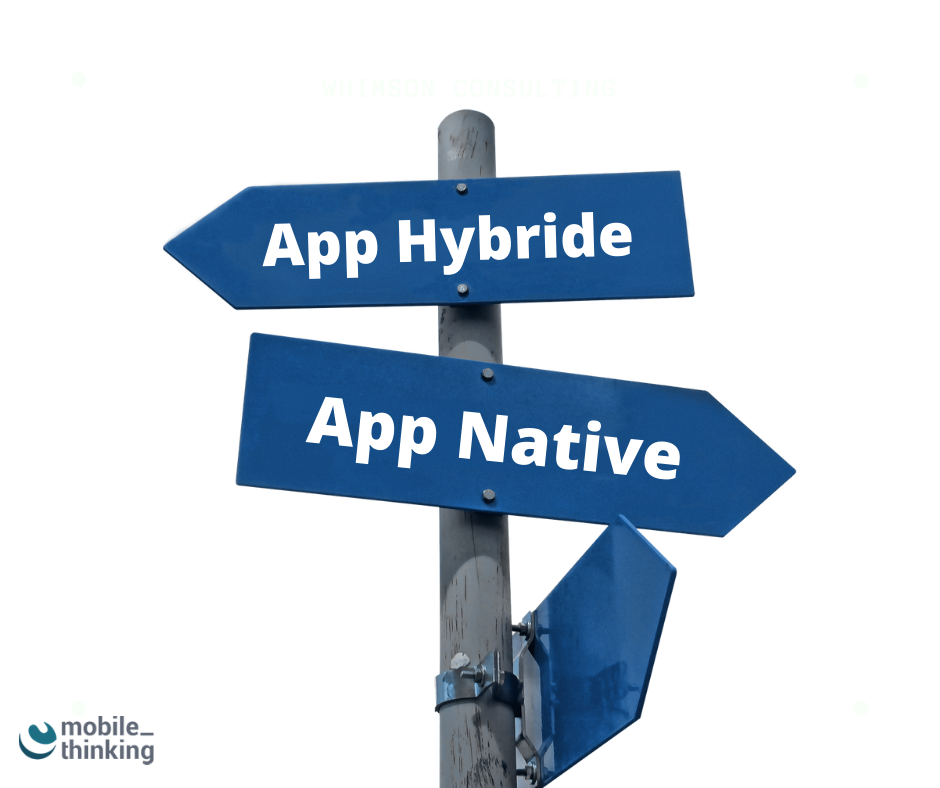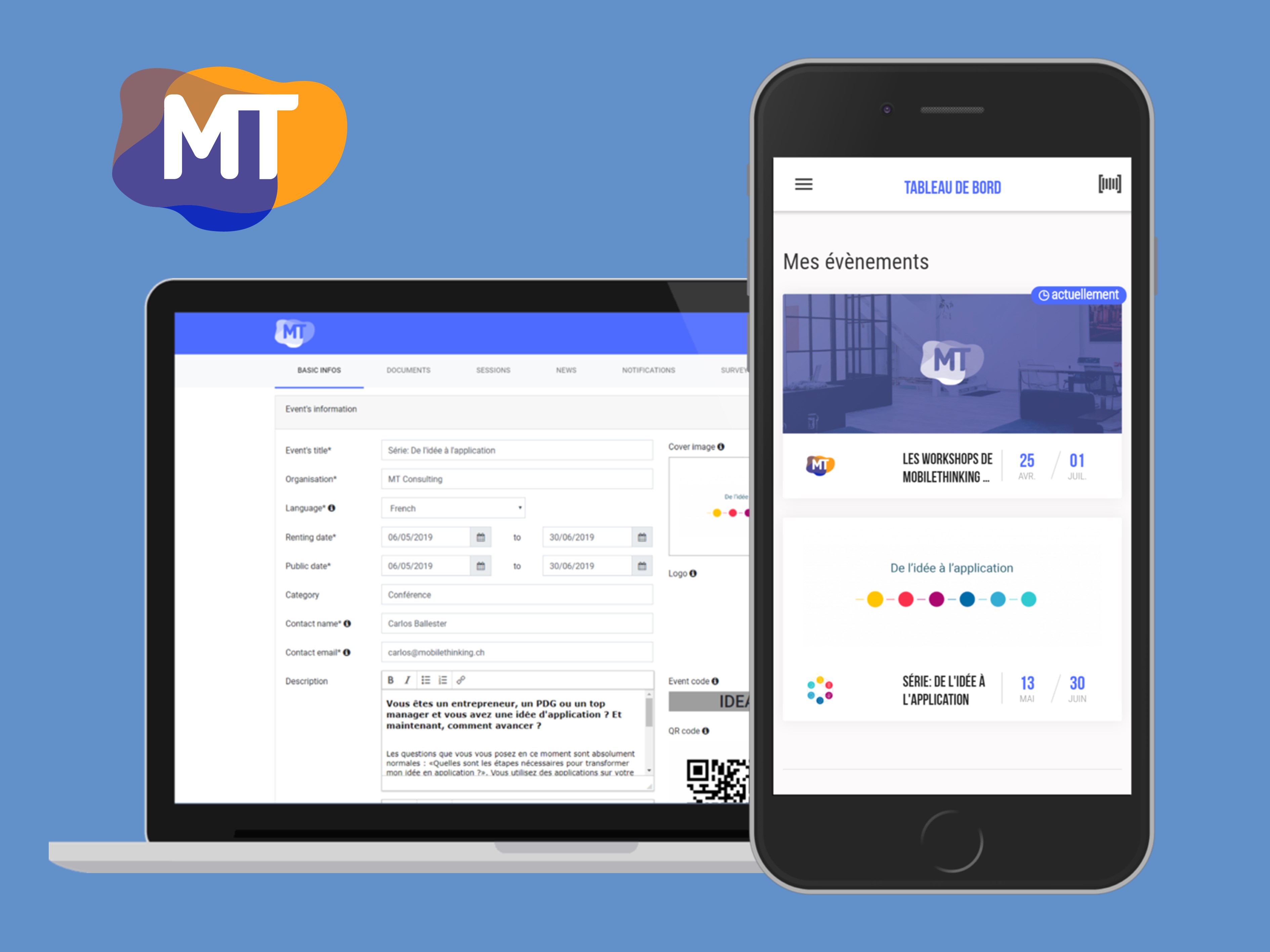You want to create or redesign a professional mobile application, and you're wondering which approach to choose? Is it better to develop a hybrid application or a native application? Here are a few keys to help you see things more clearly.
Hybrid or native application
for your business?
13/05/2021

A native application
An application is said to be native when it is developed in the language specific to an operating system (OS). For example, a native Apple app is developed in SWIFT and runs only on IOS.
The benefits
- it uses the integrated features of the OS;
- direct access to the device's resources gives it high performance: it is faster, more fluid and more secure.
The disadvantages
- it is more expensive to develop (since it is often necessary to create one for each platform, IOS and Android);
- its duplication leads to higher maintenance costs, and the same goes for the evolutions that will inevitably come up;
- you need to have the human resources with the skills for each targeted platform: in other words, a mobile developer for each app.
The user experience offered by a native application is often superior to that offered by a hybrid application. Among other things, this is due to the native support of the graphics engine, which leads to a fluid experience and fast loading of content and visual elements.
A hybrid application
A hybrid application is multiplatform: it runs on Android as well as on IOS but also on the WEB. The uniqueness of the source code allows to go faster than if you had to release two native applications. It also facilitates updates, corrective or evolutionary.
The benefits
- it is faster to develop (one code several platforms with minor adaptations);
- in general, less expensive and easier to maintain and evolve.
The disadvantages
- the hybrid application is less efficient,
- it must remain simple to gain in stability.
The main strength of the hybrid application is its speed of implementation on the entire mobile fleet. The hybrid solution is very efficient if your project is to release an application in a short time. It can also be an interesting choice to test a first application version on your market.
Today, hybrid applications are able to do the same things as native ones, at the cost of an extra layer of code and a lower performance:
-> Push notifications;
-> access to all phone features (camera, microphone, GPS, accelerometer, Bluetooth...).
Today, hybrid applications are able to do the same things as native ones, at the cost of an extra layer of code and a lower performance:
-> Push notifications;
-> access to all phone features (camera, microphone, GPS, accelerometer, Bluetooth...).
A technical workshop to help you choose
There is no right or wrong choice, between native or hybrid mobile application. To choose the right solution, you need to identify all your needs:
- precise definition of your objective: obtain the best user experience? reduce the time-to-market?
- will the application put a lot of strain on the platform (for example, an application requiring important graphic resources - 3D, game, real time...)?
- define your budget on the long term;
- think in terms of scalability.
You should also be aware that the technologies used differ. This can be an important point if you do not want to outsource the maintenance of your application. You would then need to have the appropriate skills in-house:
- for a hybrid application, the languages in vogue are Vue.js and Angular (IONIC) on the front and PHP Laravel
- on the back for a native development, Swift is necessary on iOS, and Java or Kotlin are used on Android.
Finally, whatever its nature, never lose sight of the fact that it must above all meet the needs of the users.
Conclusion
The technical choice between hybrid and native is as much a matter of objectives as of budget or planning. With our expertise in mobile development, digital transformation and Design Sprint, we are able to guide you in your choice. Contact us today and let's study your project together in order to determine the ideal solution for all your needs.
MobileThinking uses the Design Sprint approach to deliver a user-tested prototype in 5 days. Understand, diverge, decide, prototype, test: a dedicated team with various skills obtains a unique solution in 5 steps. This method, based on Design Thinking, allows you to quickly obtain a prototype with a minimal investment, and to redirect the project if necessary just as quickly.
Once the prototype is validated in a Design Sprint workshop, a complementary technical study allows us to make the final choice between native and hybrid applications, and to determine the technology that will be used. Outsourcing the development of your project frees you from technical constraints and allows you to benefit from the expertise of professionals experienced in mobile development.
Once the prototype is validated in a Design Sprint workshop, a complementary technical study allows us to make the final choice between native and hybrid applications, and to determine the technology that will be used. Outsourcing the development of your project frees you from technical constraints and allows you to benefit from the expertise of professionals experienced in mobile development.




